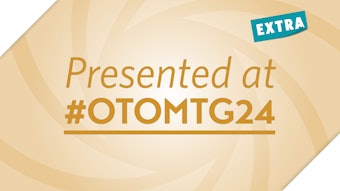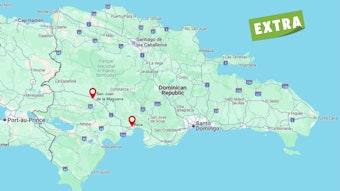Behind the Curtain: Why Those RUC Surveys in Your Inbox Really Matter
Your participation in RUC surveys directly impacts Medicare reimbursement rates across all medical specialties.

Have you ever wondered why the Academy keeps asking you to complete those AMA/RUC surveys? You are not alone. Many members see these requests and think, "Another survey? I'll get to it later..." (And later never comes.)
But here's the reality about those surveys and why your participation is so crucial. They are quietly shaping physician reimbursement across the entire spectrum of medicine.
It is important to understand the RUC process and why your participation is essential. But more importantly, your call to action is to complete the survey the next time you see it in your inbox. Your future payments depend on it.
What Is the RUC?
In 1992, Medicare transitioned from a payment system based on “usual, customary, and reasonable charges” to a payment system based on a Resource-Based Relative Value Scale (RBRVS). In response, the American Medical Association (AMA) formed the Relative Value Scale Update Committee (RUC)—a volunteer group of 32 physicians and over 300 physician advisors. This unique multispecialty committee is responsible for informing the federal government about the resources required to provide medical procedures and services and recommending payment values.
The RUC is strategically structured to evaluate thousands of individual services and procedures across the entire house of medicine, relying on the clinical expertise of specialty societies, healthcare professional groups, and medical associations—including the AAO-HNS. Of its 32 panel members, 22 are appointed by major national medical specialty societies. Additionally, the RUC includes four seats that rotate on a two-year basis: two for an internal medicine subspecialty, one for primary care, and one for any other specialty. The remaining six seats are reserved for the RUC chair and representatives from the AMA, the American Osteopathic Association, the RUC Healthcare Professionals Advisory Committee Review Board, the Practice Expensive Review Committee, and the Current Procedural Terminology (CPT) Editorial Panel.
Three times a year, the RUC convenes to develop its recommendations, which are then presented to the Centers for Medicare & Medicaid Services (CMS). To accomplish this, the RUC regularly assesses physicians’ work (including the time and intensity associated with a service), clinical staff time, medical supplies and medical equipment, and professional liability insurance associated with performing a service. These assessments allow the RUC, in conjunction with the CPT Editorial Panel, to evaluate the values of CPT codes to determine whether they are appropriate, undervalued, or overvalued.
Why Is the RUC Important?
Although the RUC is required to submit recommendations, CMS is not obliged to accept them. However, CMS has historically accepted over 90% of the RUC’s relative value recommendations annually. CMS uses the RUC’s suggestions to develop policies and relative values for physician services provided to Medicare beneficiaries. Once finalized, CMS outlines the work relative value units (wRVUs) for new and revised CPT codes in the Medicare Physician Fee Schedule, which is typically released to the public in early November each year. The RUC’s partnership with CMS makes their recommendations incredibly influential in shaping Medicare physician payment, and consequently, payment by most third-party payers.
How Is AAO-HNS Involved with the RUC?
The Academy actively participates in the RUC process at meetings each winter, spring, and fall. The Academy’s current RUC panel representatives include a RUC panel member and an alternate panel member. In addition to the 32-member RUC panel, the RUC also maintains an advisory committee, which comprises one physician member from each of the nearly 130 specialty societies seated in the AMA House of Delegates. It is important to recognize that the RUC panel member representatives for each specialty are not advocates for their specialties; rather, they participate in an individual capacity and represent their own views and independent judgment while serving on the panel. In contrast, the Academy’s RUC advisors work alongside the Physician Payment Policy (3P) Workgroup and Academy staff to determine which AAO-HNS members should be surveyed based on the nature of the procedure or service.
Why Are RUC Surveys Conducted, and How Was I Selected to Participate?
RUC surveys allow medical specialty societies like AAO-HNS to play an active role in ensuring that the relative values assigned to CPT codes are accurately and fairly represented to CMS. Questions within the survey ask physicians to compare the service or procedure being surveyed with another existing CPT code. A list of possible comparators, or reference services/procedures, are provided to survey respondents as part of the survey. After surveys are distributed to members to obtain data, the results allow RUC advisors to obtain estimates of the procedure’s time, complexity, and number of visits. The RUC advisors then analyze survey results to generate relative value recommendations and practice expense direct inputs for otolaryngology services, which are presented to the RUC on behalf of the specialties who will use the code.
RUC surveys are deployed to a random sampling of the AAO-HNS membership who, based on criteria in their member profile, would be most likely to perform the surveyed procedure. Those who do not perform said procedure should NOT complete a RUC survey.

What Type of Information Does a RUC Survey Collect?
RUC surveys begin with a critical step: a review of the CPT code’s descriptor and vignette. The vignette describes a typical clinical scenario for the procedure, the remainder of the survey should be completed using the typical patient described in the vignette. However, because code descriptors may have been modified from their previous versions, survey respondents will be asked if the descriptor and vignette match their typical patient (i.e., more than 50% of the time). If the descriptor and vignette do not match the typical patient, respondents are asked to write a brief rationale that explains how their typical patient differs from the survey descriptor or vignette.
Respondents are then asked to review a list of reference codes and then select a code most similar in time and work to the code that is being surveyed. Although the reference code need not be clinically similar to the procedure being surveyed, it should be representative of a comparable amount of work and expertise. It is important to note that there are extensive rules and requirements around crafting the reference service list of codes that appear in the RUC surveys, so while they may not appear to be quality comparators, they have been included because they meet the requirements and respondents should select the reference codes that most closely mirror the time, work, and intensity of the code(s) being surveyed. Respondents should also consider the global period of the service being reviewed. For CPT codes with 0-, 10-, or 90-day global periods, physician services or visits provided within 24 hours prior are included and should be considered by respondents in their recommended value for the service. Likewise, for 10- and 90-day global periods, the post-care provided after the procedure or service should be included in the estimate of physician work for a given procedure.
After selecting a reference code, respondents are asked to estimate the time it takes to perform the procedure or service being surveyed. This estimate is broken into three categories (pre-service, intra-service, and post-service) and should account for the physician’s personal experience conducting the procedure or service. Importantly, when estimating the time it takes to perform the procedure or service, physicians should base their estimates on the typical patient—not the most straightforward or the most complex case the physician respondent has encountered. Time estimates should include the entire service period, which is outlined below. When estimating the time it takes to perform the procedure or service, survey respondents should consider three components:
- Pre-service time is the physician work provided before the onset of the procedure. It begins the day prior to the procedure and lasts until the time the operating procedure begins. Pre-service time is divided into three activities: evaluation; positioning; and scrub, dress, and wait time.
- Intra-service time includes all “skin to skin” work that is a necessary part of the procedure.
- Post-service time includes physician services performed on the day of the procedure or after the procedure has been performed. For 010 or 090 global codes this will also include hospital visits and/or post-operative office visits.
Finally, survey respondents are asked to evaluate the overall physician work for the procedure or service and assign an estimated work relative value unit. The total physician work includes the time it takes the physician to perform the procedure or service, the mental effort and judgment required to perform the procedure or service, and the technical skill required to perform the procedure or service. This valuation should not include any work provided by clinical staff who are employed by the respondents’ practice and cannot bill separately.
What Happens After a RUC Survey Is Complete?
After the RUC survey closes, the Academy RUC advisors and staff collate the data and develop a final recommendation, which is presented at one of three annual RUC meetings. Based on the survey presentation, the RUC panel determines the validity of the survey and ultimately determines whether or not to accept the survey recommendation. If the panel determines that the survey responses are invalid, or if not enough surveys are completed, the survey process must be repeated and the process begins again.
After the RUC reviews the survey results and debates the recommended values, the RUC forwards its own recommendations to CMS. These recommendations are kept confidential until CMS publishes the Medicare Physician Fee Schedule proposed rule—typically in mid-summer. During this time, CMS may reject, approve, or modify the RUC’s suggestions. In November of each year, CMS publishes the Medicare Physician Fee Schedule Final Rule, and the new code values take effect on January 1 of the next year.
Further Reading:
Development of the Resource-Based Relative Value Scale
An Introduction to the RUC
Composition of the RVS Update Committee (RUC)
For questions regarding RUC processes, RUC surveys, or the Academy’s role in the RUC, please email healthpolicy@entnet.org.



















